Cost 5.2 thousand dollars Length 84 m | Launched 30 April 1896 | |
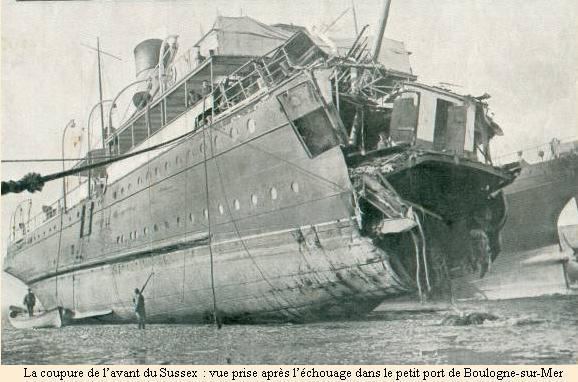 | ||
Name Sussex (1896–1920)Aghia Sophia (1920–22) Owner London, Brighton and South Coast Railway (1896–1914)Compagnie des Chemins de Fer de l'État Français (1914–1919)D Demetriades (1919–22) Operator London, Brighton and South Coast Railway (1896–1917)Marine Nationale (1917–19)D Demetriades (1919–22) Builder | ||
Sussex was a cross-English Channel passenger ferry, built in 1896 for the London, Brighton and South Coast Railway (LBSCR). After the LBSCR came to a co-operation agreement with the Compagnie des Chemins de Fer de l'État Français, she transferred to their fleet under a French flag. Sussex became the focus of an international incident when she was severely damaged by a torpedo from a German U-Boat in 1916. After the war she was repaired and sold to Greece in 1919, being renamed Aghia Sophia. Following a fire in 1921, the ship was scrapped.
Contents
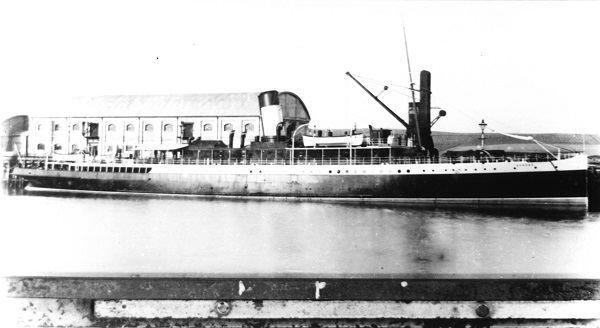
Description
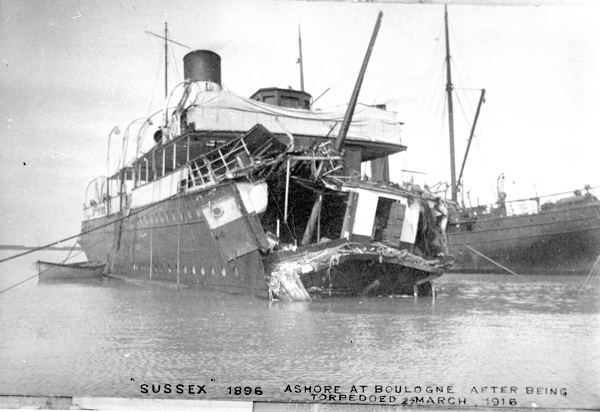
Built in 1896 by William Denny and Brothers of Dumbarton for the LBSCR, she was a direct replacement for the 1893 built TSS Seaford, which sank in 1895 after a collision with another LBSCR ferry, the TSS Lyon.
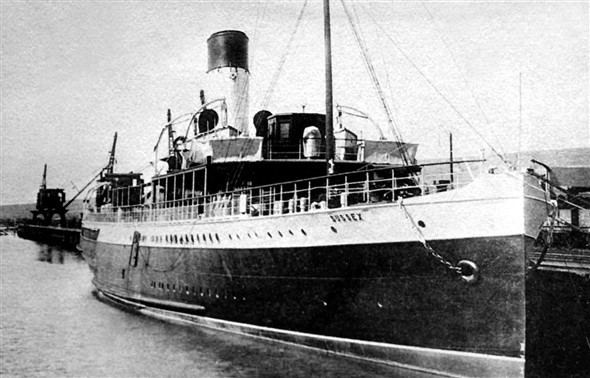
TSS Sussex was 275 feet 0 inches (83.82 m) long, with a beam of 34 feet 1 inch (10.39 m). She had a GRT of 1,565 and a NRT of 328. She was powered by two four-cylinder triple expansion steam engines, of 308 nhp, supplemented by a steam turbine. This power unit could propel her at 20.5 knots (38.0 km/h). She was launched on 30 April 1896.
History
Sussex served on the Newhaven - Dieppe route, making her maiden voyage on the 31 July 1896.
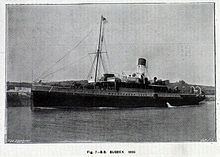
In March 1912 she came to the assistance of the stricken P&O liner Oceana, which had been in collision with the 2850-ton German-registered 4 masted steel-barque Pisagua, and subsequently sank with the loss of 9 lives. Replaced by the Paris on the Newhaven - Dieppe route in 1913, she was moved to Brighton to offer long day trip excursions, in competition with the White Funnel fleet paddle steamers of Bristol-based P and A Campbell. However, this proved unlucrative, and she was laid up from the end of that season. She was then sold in 1914 to the Compagnie des Chemins de Fer de l'État Français, remaining under the management of the LBSCR.
World War I
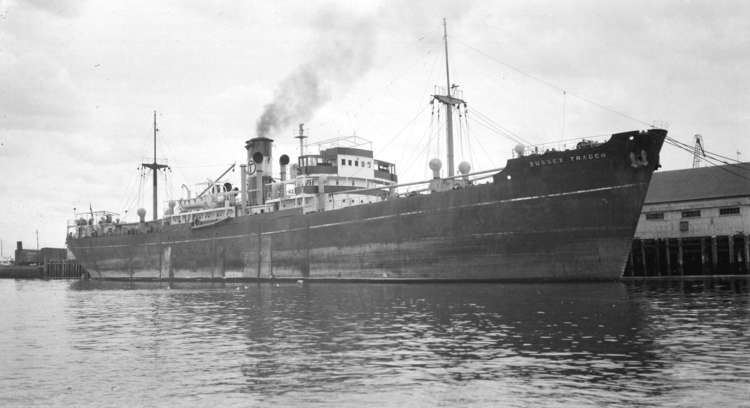
During the First World War, shipping from Newhaven was diverted to operate from Folkestone in order to free Newhaven for supplying British troops on the Western Front.
On 24 March 1916, Sussex was on a voyage from Folkestone to Dieppe when she was torpedoed by SM UB-29. The ship was severely damaged, with the entire bow forward of the bridge blown off. Some of the lifeboats were launched, but at least two of them capsized and many passengers were drowned. Of the 53 crew and 325 passengers, at least 50 were killed, although a figure of between 80 and 100 is also suggested. Sussex remained afloat and was eventually towed stern-first into Boulogne harbour.
The dead included the celebrated Spanish composer Enrique Granados, his wife Amparo, a Persian prince, Bahram Mirza Sardar Mass'oud, and British tennis player Manliff Goodbody. Several Americans were injured. Although no US citizens were killed, the incident enraged public opinion in the United States, and caused a heated diplomatic exchange between the US and German governments. In May 1916, Germany issued a declaration, the so-called Sussex pledge, which effectively represented the suspension of the "intensified" U-boat campaign.
Between 1 and 3 January 1917, HMS Duchess of Montrose, HMS Myrmidon, HMS Nepaulin, HMS Redcar, HMT Security assisted in the salvage of Sussex after she struck a mine near the West Dyck shoal on her way to Dunkirk, each ship receiving a portion of the salvage money. Sussex remained in France, and was used by the Marine Nationale at Le Havre.
Notable survivors included Edna Frances Hilton, later Lady Cope and then Lady Peto.
Post-World War I
Sussex was repaired in France post-war, and in 1920 was sold to D Demetriades, Piraeus, being renamed Aghia Sophia. She was scrapped in 1921 following damage sustained in a fire.
